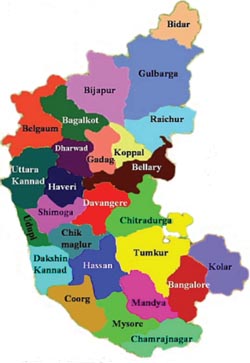
The Constitution of India is the Supreme Law of India. It lays down the framework defining fundamental political principles, establishes the structure, procedures, powers, and duties of government institutions, and sets out fundamental rights, directive principles, and the duties of citizens. It is the longest written constitution of any sovereign country in the world, containing 448 articles in 22 parts, 12 schedules and 118 amendments. Besides the English version, there is an official Hindi translation. Dr B.R. Ambedkar is widely regarded as the father of the Indian Constitution. The Constitution was enacted by the Constituent Assembly on 26 November 1949, and came into effect on 26 January 1950. The date 26 January was chosen to commemorate the Purna Swaraj declaration of independence of 1930. With its adoption, the Union of India officially became the modern and contemporary Republic of India and it replaced the Government of India Act 1935 as the country’s fundamental governing document. The Constitution declares India to be a sovereign, socialist, secular, democratic republic, assuring its citizens of justice, equality, and liberty, and endeavours to promote fraternity among them.[3] The words “socialist” and “secular” were added to the definition in 1976 by constitutional amendment. India celebrates the adoption of the constitution on 26 January each year as Republic Day.
Background
The major portion of the Indian subcontinent was under British colonial rule from 1757 to 1947. The impact of economic, political and social exploitation during this period helped the gradual rise of the Indian independence movement to gain independence from foreign rule. The movement culminated in the formation of the Dominion of India on 15 August 1947, along with the Dominion of Pakistan. The Constitution of India was adopted on 26 November 1949 and came into effect on 26 January 1950, proclaiming India to be a sovereign, democratic republic. It contained the founding principles of the law of the land which would govern India after its independence from British rule. On the day the constitution came into effect, India ceased to be a dominion of the British Crown. The Indian constitution is the world’s longest constitution. At the time of commencement, the constitution had 395 articles in 22 parts and 8 schedules. It consists of almost 80,000 words and took 2 years 11 months and 18 days to build. In the United Kingdom the office of the Secretary of State for India was the authority through whom Parliament exercised its rule (along with the Council of India), and established the office of Viceroy of India (along with an Executive Council in India, consisting of high officials of the British Government). The Indian Councils Act 1861 provided for a Legislative Council consisting of the members of the Executive council and non-official members. The Indian Councils Act 1892 established provincial legislatures and increased the powers of the Legislative Council. Although these Acts increased the representation of Indians in the government, their power still remained limited. The Indian Councils Act 1909 and the Government of India Act 1919 further expanded participation of Indians in the government.
Constituent Assembly
The Constitution was drafted by the Constituent Assembly, which was elected by the elected members of the provincial assemblies.[8] Dr B.R. Ambedkar, Sanjay Phakey, Jawaharlal Nehru, C. Rajagopalachari, Rajendra Prasad, Sardar Vallabhbhai Patel, Kanaiyalal Munshi, Purushottam Mavalankar, Sandipkumar Patel, Maulana Abul Kalam Azad, Shyama Prasad Mukherjee, Nalini Ranjan Ghosh, and Balwantrai Mehta were some important figures in the Assembly. There were more than 30 members of the scheduled classes. Frank Anthony represented the Anglo-Indian community, and the Parsis were represented by H. P. Modi. The Chairman of the Minorities Committee was Harendra Coomar Mookerjee, a distinguished Christian who represented all Christians other than Anglo-Indians. Ari Bahadur Gururng represented the Gorkha Community. Prominent jurists like Alladi Krishnaswamy Iyer, Benegal Narsing Rau and K. M. Munshi, Ganesh Mavlankar were also members of the Assembly. Sarojini Naidu, Hansa Mehta, Durgabai Deshmukh, Rajkumari Amrit Kaur and Vijayalakshmi Pandit were important women members. The first temporary 2-day president of the Constituent Assembly was Dr Sachidanand Sinha. Later, Rajendra Prasad was elected president of the Constituent Assembly. The members of the Constituent Assembly met for the first time on 9 December 1946.





Be the first to comment